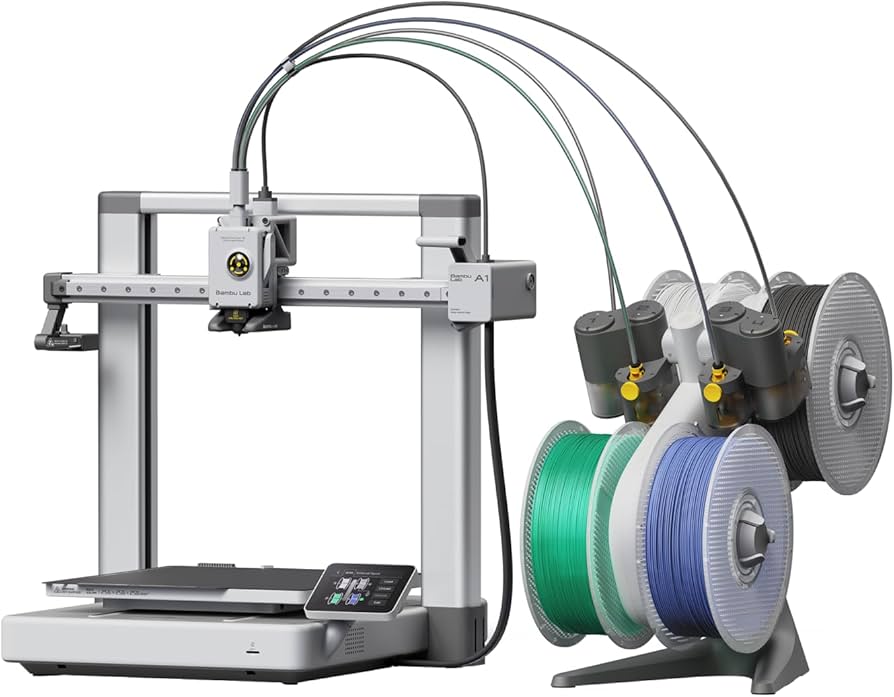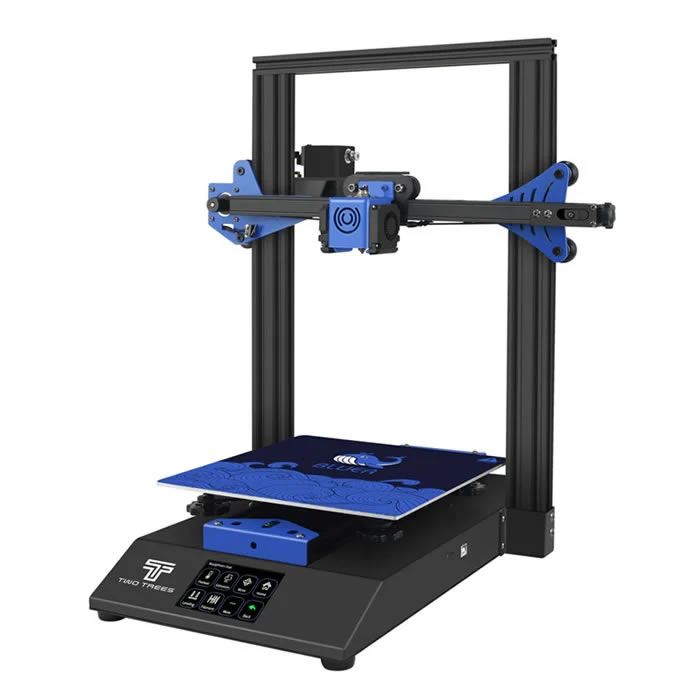Compare A1 vs Bluer
Comparison between the best 3D printers
Choose the best 3D printer at the best price. The cheapest 3D printers are here.
Buy a 3D printer here with 3D Fila.
 |
 |
|
| Model | A1[BUY A1] |
Bluer |
| Printing Material | Filament | Filament |
| Buy Filament for Bambu Lab A1 | Buy Filament forTwoTrees Bluer | |
| Estimated price | $700,00 | $169,00 |
| Manufacturer | Bambu Lab | TwoTrees |
| Release Year | 2023 | 2019 |
| Print Volume [mm] | 256x256x256 | 230x230x280 |
| Printer Size [mm] | 385x410x430 | 400x410x520 |
| Weight [kg] | 8,3 | 8 |
| Power Loss Recovery | YES | YES |
| Enclosed printer | NO | NO |
| Bed Leveling | Automatic | Manual |
| Filament End Sensor | YES | YES |
| Bed type | Heated | Heated |
| Power supply system | Direct Drive | Bowden |
| Standard nozzle | 0,4 | 0,4 |
| Maximum Nozzle Temperature [°C] | 300 | 260 |
| Maximum Bed Temperature [°C] | 100 | 100 |
| Maximum printing speed [mm/s] | 500 | 200 |
| Filament holder | YES | YES |
| Camera for supervision | YES | YES |
| Recommended filaments | PLA, PETG, TPU, PVA | PLA, PETG |
| Recommended slicers | SuperSlicer, PrusaSlicer, Cura, OrcaSlicer | Cura, Simplify, Slic3r |
| Maximum Resolution [mm] | 0,1 | 0,1 |
| Processor | MKS Robin Nano V1.2 + TMC2208 | |
| Display | Touchscreen 3,5 | Touchscreen TFT 3,5'' |
| Power Supply | 350 W | 240W |
| Connectivity | Wi-Fi, Bambu-Bus, Cartão Micro SD | SD / USB |
| Operating systems | Windows, Linux, Macbook | Windows, Mac, Linux |
| Date of registration in the system | 2024-07-17 | 2021-09-20 |
| Release date | 2023 | 2019 |
| Extra features | The BambuLab A1 printer features fully automatic calibration, multi-color printing with the AMS system, active flow rate compensation, quick nozzle change with a clip, active motor noise cancellation, a build volume of 256x256x256 mm³, a maximum extruder temperature of 300°C, and a heated bed of up to 100°C. In addition, it has high precision, a machine health management system and an intuitive 3.5-inch touchscreen interface. | The Bluer offers interesting features such as automatic bed leveling, a 3.5-inch color touchscreen for easy operation, and a filament sensor to prevent print failures. It has a robust metal extruder and a generous 230 x 230 x 280 mm print volume, suitable for a variety of projects. The community mentions improvements made by Two Trees based on feedback, increasing its reliability. |
| Support for multiple colors and materials (AMS and CFS) | YES | NO |
Notes * |
||
| Cost-benefit | 7 / 10 | 7 / 10 |
| Hardware | 4.2 / 10 | 2 / 10 |
| Tela | . | . |
| Print volume | 4 / 10 | 3 / 10 |
| Performance | 4 / 10 | 2 / 10 |
| [BUY A1] |
Conclusion |
| In comparing the Bambu Lab A1 and the TwoTrees Bluer 3D printers, several key factors stand out that can help potential buyers make an informed decision. **Performance and Features**: The Bambu Lab A1 excels with its higher maximum printing speed, significantly greater extruder temperature, and advanced features like automatic calibration and support for multi-color printing. The printer is designed for high productivity and precision, making it suitable for users looking to produce high-quality prints with a diverse range of materials. In contrast, the TwoTrees Bluer, while offering essential features such as automatic bed leveling and a robust design, is positioned as a more basic and affordable option. **Print Volume and Build Size**: The A1 offers a larger print volume, which is a critical consideration for users who need to print larger models or multiple items in one go. Although the Bluer provides a respectable volume as well, it falls short compared to the A1, which could impact project scope. **Cost and Value**: While the A1 comes at a higher price point, it delivers greater technological advancements, faster printing capabilities, and overall performance. On the other hand, the Bluer is more budget-friendly, making it attractive for hobbyists or those just starting in 3D printing. However, this lower cost comes with limitations in performance and features compared to the A1. **Overall Recommendation**: For users seeking high performance, essential features, and versatility, the Bambu Lab A1 represents a strong investment that justifies its price. In contrast, those looking for a reliable entry-level option or engaging in lighter printing tasks may find that the TwoTrees Bluer meets their needs adequately while being easier on the budget. Ultimately, the choice depends on individual requirements, including the intended use and budget constraints. |

